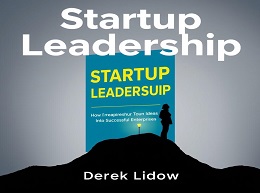Uncommon Sense: The Popular Misconceptions of Business, Investing and Finance and How to Profit

Challenging the Status Quo
"Uncommon Sense: The Popular Misconceptions of Business, Investing and Finance and How to Profit by Going Against the Tide" by Michael Kemp is a compelling guide for anyone looking to succeed by challenging conventional wisdom. Kemp argues that the key to thriving in business and finance lies in identifying and exploiting common misconceptions. This book serves as a manual for thinking differently and making contrarian decisions that lead to success. In this review, we will delve into the major themes of the book, highlight its most valuable insights, and explore real-world examples of contrarian thinking in action.
The Illusion of Market Efficiency
One of the central themes in Kemp's book is the critique of the Efficient Market Hypothesis (EMH). According to EMH, all known information is already reflected in asset prices, making it impossible to consistently achieve higher returns than the overall market. Kemp argues that markets are not always efficient due to human behavior and cognitive biases.
Warren Buffett’s Contrarian Success
Warren Buffett is a prime example of someone who has consistently outperformed the market by going against the grain. By investing in undervalued companies and holding them long-term, Buffett has demonstrated that market inefficiencies can be exploited for significant gains.
The Dangers of Herd Mentality
Kemp emphasizes the dangers of herd mentality, where investors follow the crowd, often leading to bubbles and crashes. He explains that true opportunities lie in going against the crowd and making decisions based on independent analysis and critical thinking.
The Dot-Com Bubble
During the late 1990s, the dot-com bubble was driven by herd mentality, with investors pouring money into internet companies with little regard for their actual business models or profitability. The subsequent crash highlighted the perils of following the crowd blindly. Contrarian investors who avoided the bubble or shorted overvalued stocks profited significantly.
Identifying Mispriced Assets
Kemp provides strategies for identifying mispriced assets, which are often overlooked or undervalued by the market. This involves thorough research, understanding market cycles, and recognizing when an asset’s price does not reflect its intrinsic value.
The 2008 Financial Crisis
During the 2008 financial crisis, many assets were heavily undervalued due to panic selling. Investors like John Paulson and Michael Burry, who recognized the mispricing in mortgage-backed securities, were able to make substantial profits by betting against the housing market.
The Role of Behavioral Finance
Behavioral finance plays a significant role in market inefficiencies. Kemp discusses how emotions, overconfidence, and other psychological factors can lead to irrational investment decisions. By understanding these biases, investors can better navigate the market and identify opportunities that others might miss.
Overconfidence in Tech Stocks
Investors often exhibit overconfidence in high-growth sectors like technology. During the early 2000s, many were overly optimistic about tech stocks, leading to inflated valuations. Recognizing this overconfidence allowed contrarian investors to take a more cautious approach and avoid significant losses when the bubble burst.
Innovation Through Contrarian Thinking
In the realm of business, Kemp argues that innovation often comes from challenging established norms and thinking differently. He encourages entrepreneurs to question conventional practices and explore new ways of doing things.
Apple’s Rise to Dominance
Apple’s decision to focus on design and user experience, rather than just technical specifications, was a contrarian move that paid off immensely. While competitors focused on hardware and software capabilities, Apple created a seamless and aesthetically pleasing user experience, revolutionizing the tech industry.
Strategic Decision-Making
Kemp emphasizes the importance of making strategic decisions based on thorough analysis rather than following industry trends. This involves understanding the unique strengths and weaknesses of your business and leveraging them to create a competitive advantage.
Southwest Airlines’ Cost Leadership
Southwest Airlines adopted a cost leadership strategy by focusing on low fares, efficient operations, and customer service. While other airlines competed on routes and amenities, Southwest’s contrarian focus on affordability and efficiency allowed it to become one of the most profitable airlines in the industry.
Risk Management
Understanding and managing risk is crucial for business success. Kemp highlights the importance of risk management strategies that go beyond conventional approaches. This includes diversifying investments, having contingency plans, and being prepared for market volatility.
Ray Dalio’s All Weather Portfolio
Ray Dalio’s All Weather Portfolio is designed to perform well under various economic conditions. By diversifying across different asset classes and preparing for various market scenarios, Dalio’s approach exemplifies effective risk management through contrarian thinking.
Long-Term Perspective
Kemp advocates for a long-term perspective in both investing and business. He argues that short-term thinking often leads to poor decisions driven by immediate gains rather than sustainable growth.
Amazon’s Long-Term Focus
Amazon’s focus on long-term growth rather than short-term profits has been a key factor in its success. By prioritizing customer satisfaction, expanding its infrastructure, and continually innovating, Amazon has become a dominant player in multiple industries.
Case Study: Netflix’s Disruption of the Entertainment Industry
Netflix’s shift from a DVD rental service to a streaming platform was a bold move that went against the prevailing business model of the time. By investing heavily in original content and leveraging data analytics to understand viewer preferences, Netflix transformed the entertainment industry and created a new standard for content consumption.
Case Study: Tesla’s Bet on Electric Vehicles
Tesla’s focus on electric vehicles (EVs) was initially met with skepticism. However, by challenging the traditional automotive industry and investing in sustainable energy solutions, Tesla has become a leader in the EV market. Elon Musk’s vision and willingness to take risks have positioned Tesla at the forefront of automotive innovation.
Embracing Uncommon Sense for Success
"Uncommon Sense: The Popular Misconceptions of Business, Investing and Finance and How to Profit by Going Against the Tide" offers invaluable insights for anyone looking to achieve success by defying conventional wisdom. Michael Kemp’s emphasis on critical thinking, independent analysis, and contrarian strategies provides a roadmap for navigating the complexities of business and finance. By understanding and exploiting common misconceptions, entrepreneurs and investors can uncover opportunities that others might overlook and achieve extraordinary success.
Final Thoughts:
Whether you are an entrepreneur, investor, or business professional, "Uncommon Sense" is a must-read. It challenges you to question the status quo, think differently, and make informed decisions that lead to lasting success. By applying the principles and strategies outlined in this book, you can navigate the turbulent waters of business and finance with confidence and clarity.













